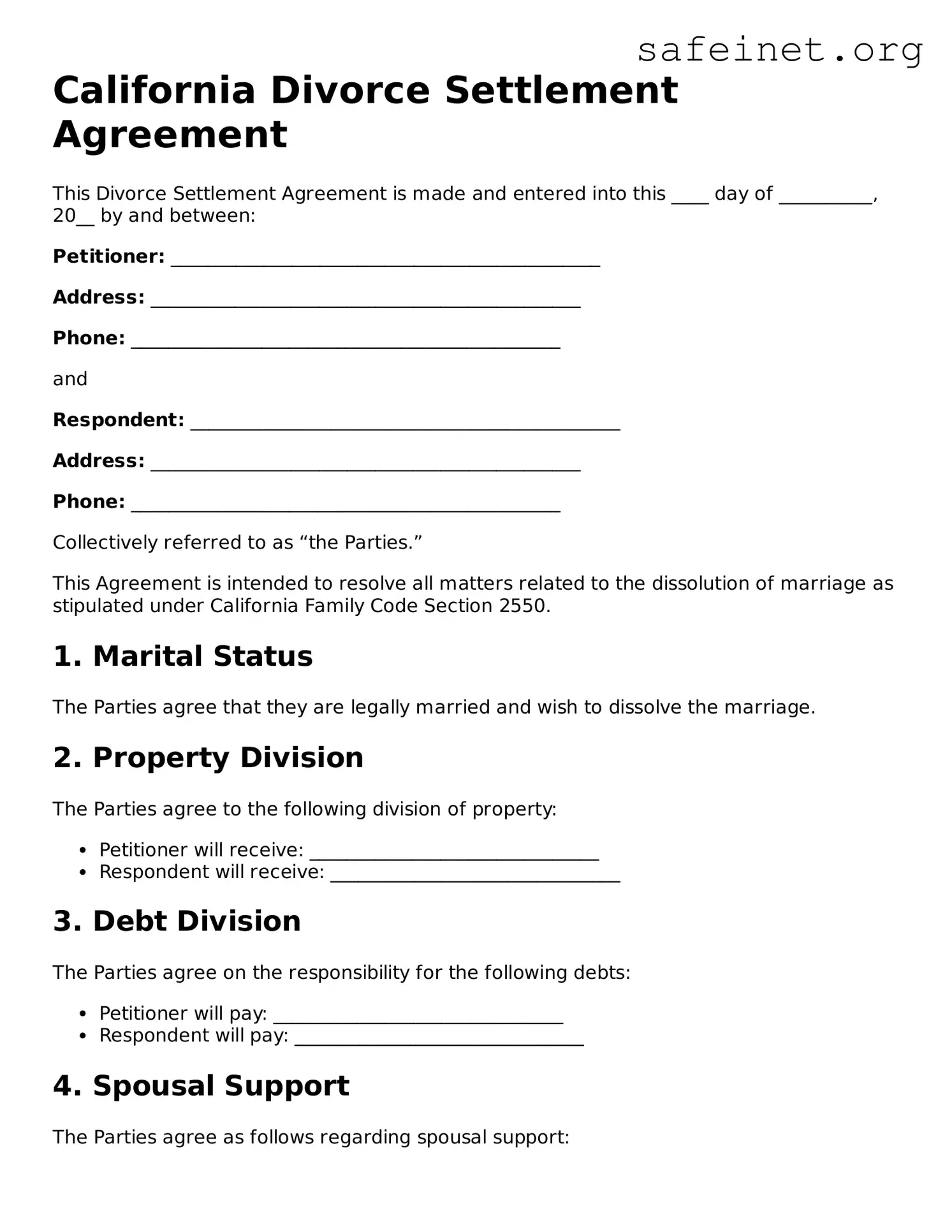California Divorce Settlement Agreement
This Divorce Settlement Agreement is made and entered into this ____ day of __________, 20__ by and between:
Petitioner: ______________________________________________
Address: ______________________________________________
Phone: ______________________________________________
and
Respondent: ______________________________________________
Address: ______________________________________________
Phone: ______________________________________________
Collectively referred to as “the Parties.”
This Agreement is intended to resolve all matters related to the dissolution of marriage as stipulated under California Family Code Section 2550.
1. Marital Status
The Parties agree that they are legally married and wish to dissolve the marriage.
2. Property Division
The Parties agree to the following division of property:
- Petitioner will receive: _______________________________
- Respondent will receive: _______________________________
3. Debt Division
The Parties agree on the responsibility for the following debts:
- Petitioner will pay: _______________________________
- Respondent will pay: _______________________________
4. Spousal Support
The Parties agree as follows regarding spousal support:
- Amount: $__________ per month.
- Duration: __________ months/indefinitely.
5. Child Custody and Support
In cases involving minor children, the Parties agree as follows:
Children’s Names: _______________________________________
- Custody arrangement: _______________________________
- Child support amount: $__________ per month.
6. Miscellaneous
- This Agreement represents the entire understanding between the Parties.
- This Agreement can only be modified by a written document signed by both Parties.
IN WITNESS WHEREOF, the Parties have executed this Divorce Settlement Agreement as of the date first above written.
_____________________________ _____________________________
Petitioner Signature Respondent Signature
Date: ____________________ Date: ____________________
